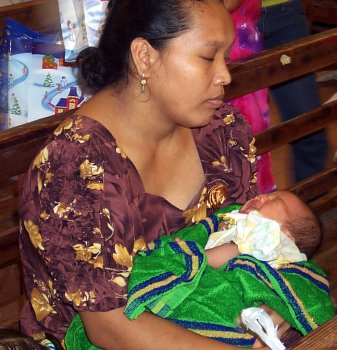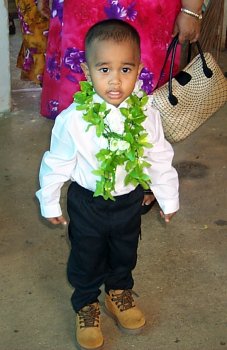
Traditional Christmas marching and singing at the Kosrae Congregational Church of Pohnpei on Christmas day. On Kosrae the village elders are usually the lead choir, locally termed Etawi mahtuh. Etawi mahtuh is traditionally followed by Etawi srihsrihk, the little children's choir. On Pohnpei, lacking sufficient senior Kosraen citizens to form Etawi mahtuh, the lead choir is Etawi srihsrihk. Old enough to walk or toddle is old enough to join in the marching.
RJ celebrates his first marching Christmas.

The Christmas service draws both regular church members, those less often seen in church, and guests. The marching service is a time of reunion, an annual drawing together of the extended Kosraen community.
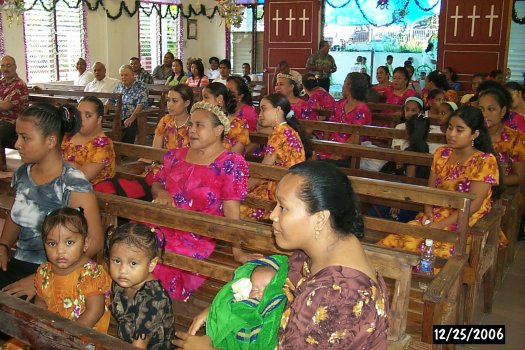
Guests are always a welcome addition.
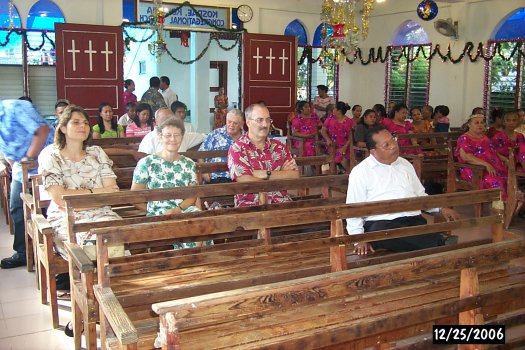
Yosiwo George and Harvey Segal
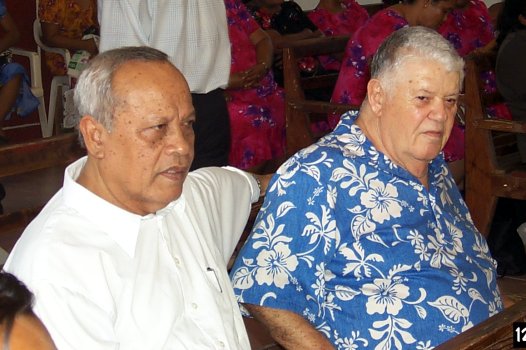
The women in each marching choir wear dresses made of the same material. The dresses are not technically uniforms as they are not uniform. Each woman has accented their own dress to their own taste. Amid unity, diversity and individuality.
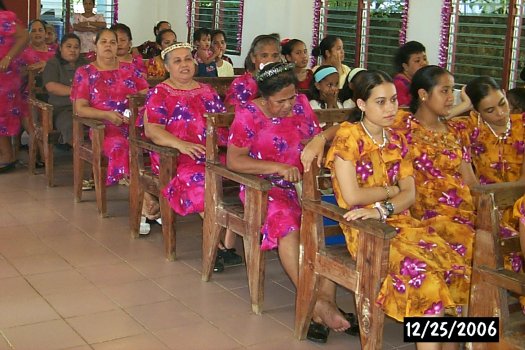
Moses Asher and Arthur Albert sit outside awaiting their turn to march.
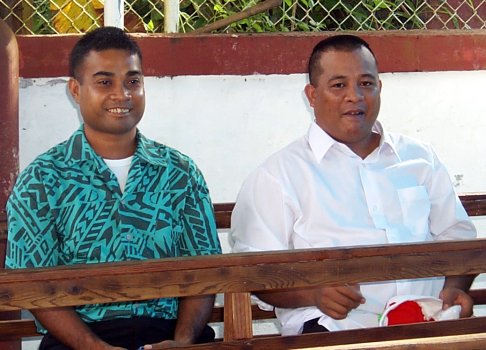
Catching up with family and friends makes the day feel like a large family reunion.
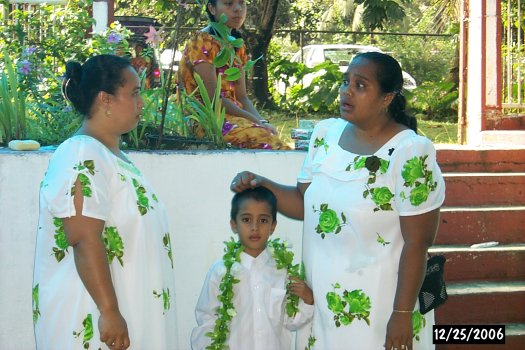
Marching men carrying a five pointed star symbolic of the star of Bethlehem. The star is supported by a circular frame. The twefuroh is usually held in front and moved in a small circular orbit in rhythm with the song. When the choir leader rings a bell twice, the twefuroh is lifted towards the heavens and moved over head. Variations on the direction of movement and number of movements overhead are unique to each choir. Little RJ, apparently aware that twefuroh can also refer to a crown of glory, has opted wear his star atop his head.
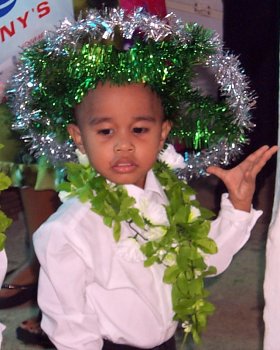
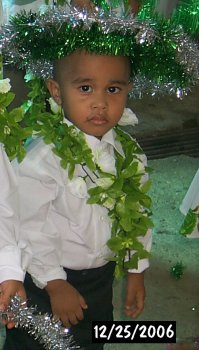
The women wear hand-sewn dresses that are new each year. One of the responsibilities of being a father is ensuring that all one's daughters have their Christmas dresses. On Kosrae a daughter might be marching with more than one choir, and the choir may also have special dresses for the Sunday before Christmas, Sunday after Christmas, and the New Year's day song festival held in Lelu. A father might easily have to come up with six or more dresses for each every daughter, plus an equal number for his wife. In some years the men have shirts of fabric that matches the dresses, and then the sons will need as many shirts as the daughters need dresses. One result is a thriving home sewing cottage industry for Kosraen women who know how to sew well.
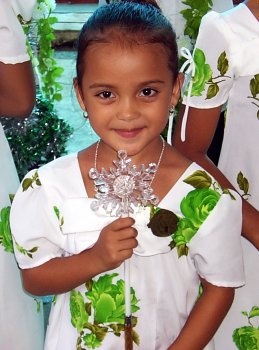
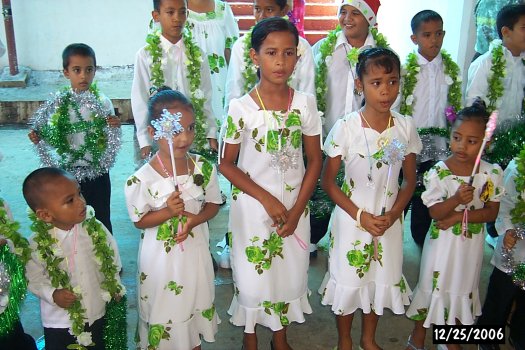
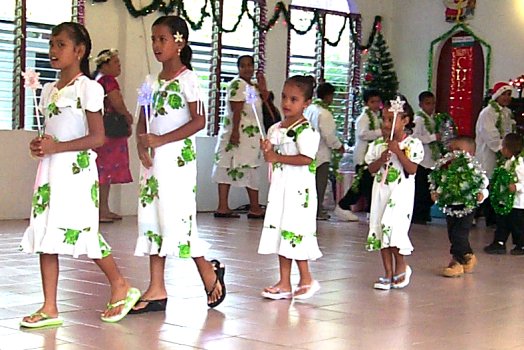
During practice marching the church was empty. One small marcher found the sudden presence of so many strangers overwhelming. Knowing that the show must go on, he never left the marching line. He simply covered his eyes so he would not see audience.
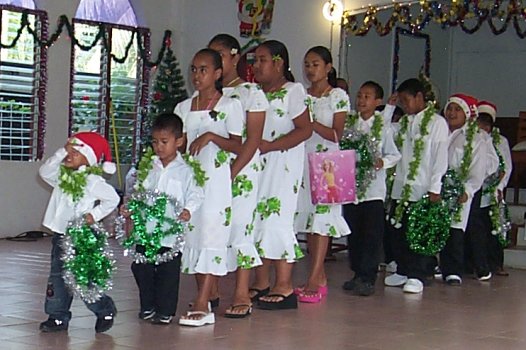
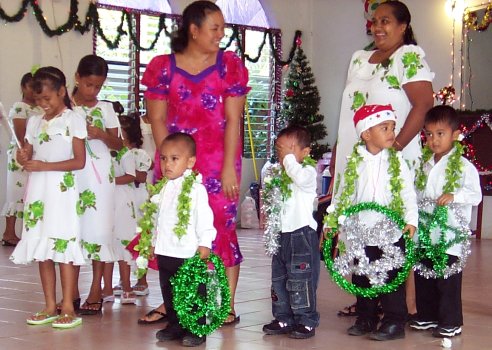
Lined up ready for the next chorus.
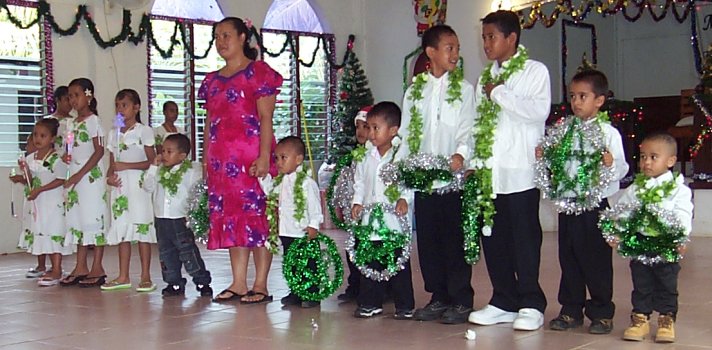
Young men with their twefuroh
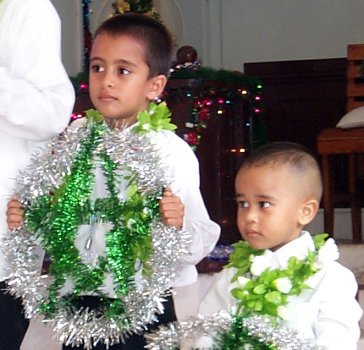
Two young women who may be ready to move up to the youth choir Etawi fuhsr next year.
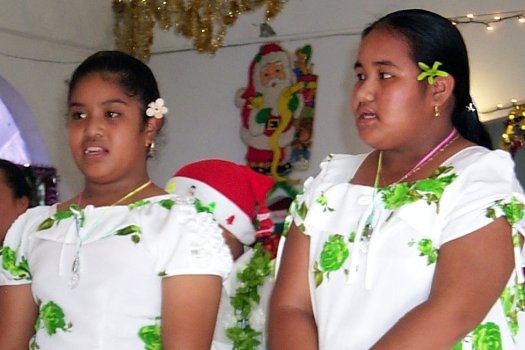
Carsina Taulung, Oleander Charley, Mira and Kenye Kier Waguk wear the orange dresses of the youth choir Etawi fuhsr. Danalyn wears the white and green of Etawi srihsrihk this year. Marson is at the back right.
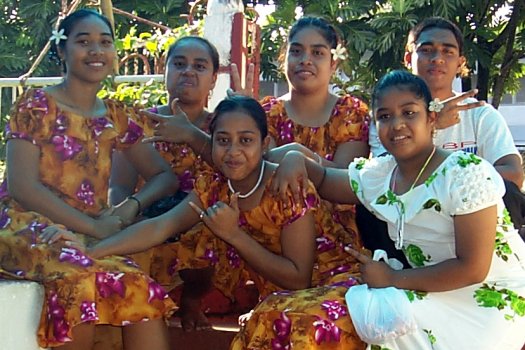
The adult church membership, Etawi, marching choir. Although there are variations in structure, a choir is typically composed of units of four men and a corresponding unit of four women. Each group of four has a lead marcher. In the women's units the lead marcher carries a star atop a pole. Women carrying a star are called "stars." The men all carry identical twefuroh. During the march the marchers will form the shape of a letter or Christmas object. A commonly formed shape is the letter "M." After forming the shape, the choir will stop singing and shout out a word that begins with that letter, in this case "Merry Christmas". Even on Kosrae the traditional Christmas greeting among Kosraens is the English "Merry Christmas!"
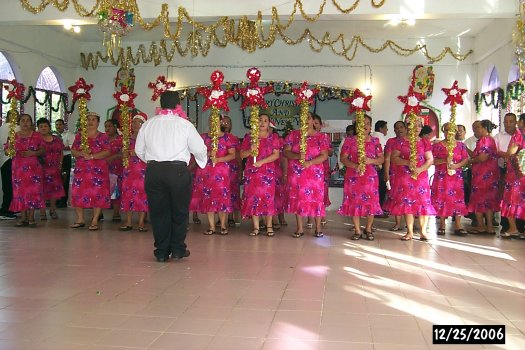
The Etawi men's units form arches for their female counterparts to march through. The lead left and right stars, seen just to the left of center, are Emliana Nedlic Segal and Elnora Nena.
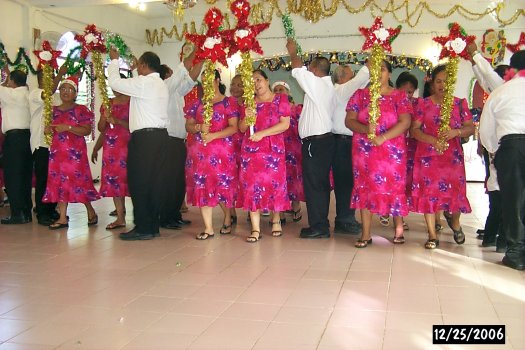
The marching quads are organized into those that march in on the left and those that march in on the right. In the large home churches of Kosrae the choirs enter the church four abreast, two lines of men and two of women. In the image right side star lead Elnora leads the right side line. Here on Pohnpei there are often not enough marchers, thus lead star Elnora Nena is followed by Antelisa George and Mada Asher Kim. The lead star for second quad right is Shrue Kilafwasru Lee Ling followed by marcher Kenye Martinez.
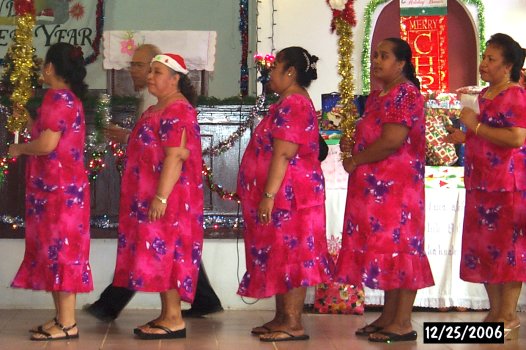
The structure of quads and a knowledge of common marching patterns permits even those who might not have made it to marching practice all that regularly to join on Christmas day. Only the quad leaders need to know where to turn and where to go, the unit members simply follow along.
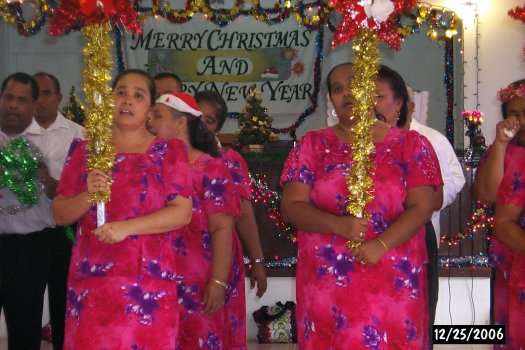
New songs are composed each year. On Kosrae a choir may have two or three marching songs, and then three Christmas songs sung as a stationary choir. A march may last upwards of forty minutes, but half an hour is more typical. For the smaller choirs of Pohnpei, marches are much shorter.
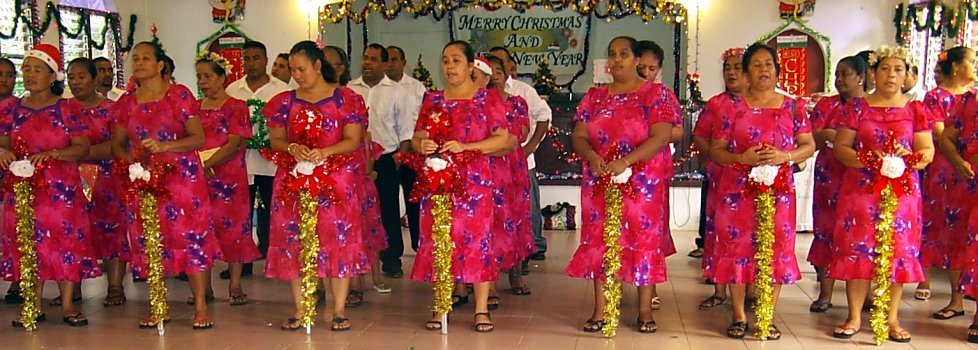
The church marching tradition may go back to roughly the 1930s. The marching may have simply been an embellishment on choirs walking into the church to sing Christmas songs. Thus the three songs sung at the end of the marching were the original set piece. In the image above the church choir has stopped marching and lowered their stars to sing their set piece songs.
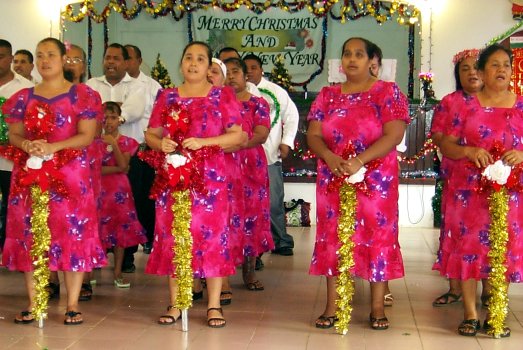
Emliana and Elnora can be identified as the lead stars due to their larger stars which also include an additional cicular embellishment on top of the star. The left and right lead star pole is also usually longer.
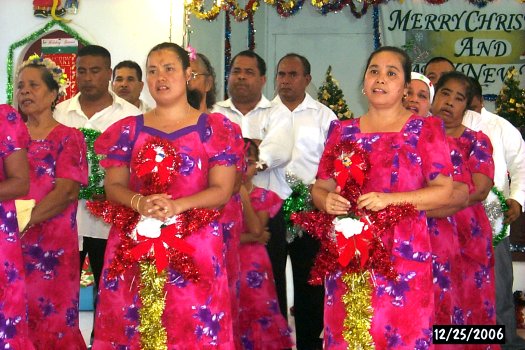
The left side marchers with stars Serlina Taulung, Sandy Albert, Abigail Segal, Jane Waguk
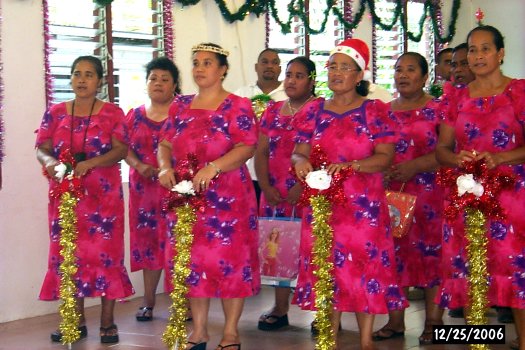
Songs are composed anew each Christmas by members of a choir with the gift of composition. There is a familiarity to the music that assists the multi-year marcher with picking up the new songs each year. The songs are sung acapella and may be based on 18th century shape note principles.
Leilani George and Cantina Albert are the lead stars for the youth choir Etawi fuhsr.
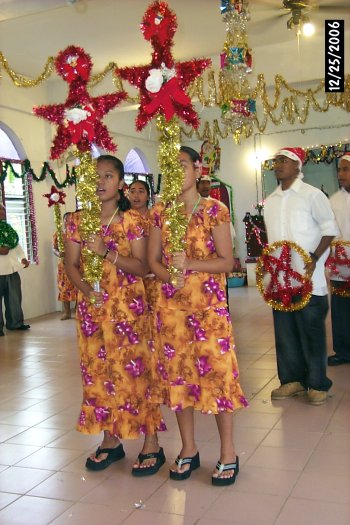
Traditional pre-western contact Kosraen indigenous dance forms were lost in the 1800s. What little was noted of it by the missionaries in their letters suggests that the dances were done in marching lines. Today's Christmas marching may be an echo of this lost heritage.
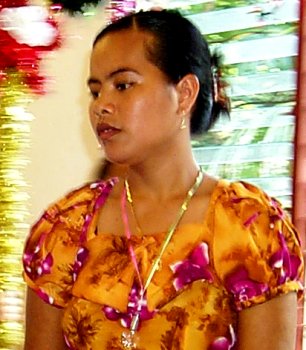
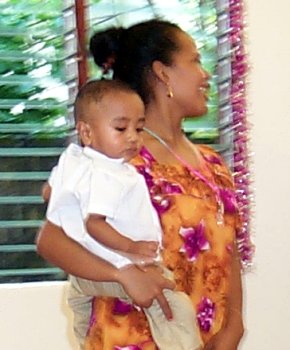
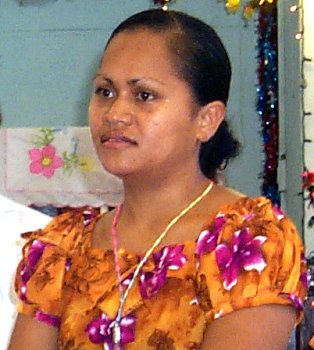
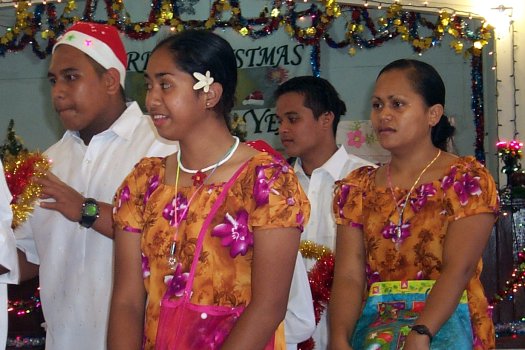
The youth choir finishes their march in choral formation, stars still up.
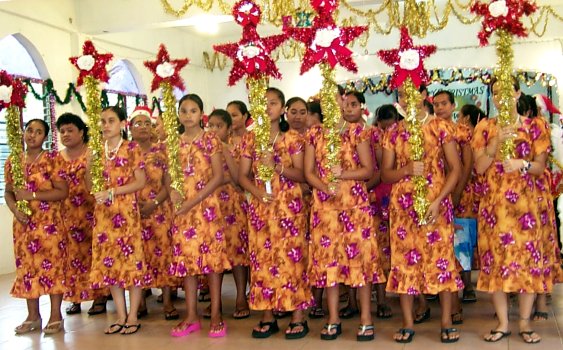
Stars down. Stars: Samantha, Chelsea, Leilani, Cantina, Mira, Vanessa, Bessie.
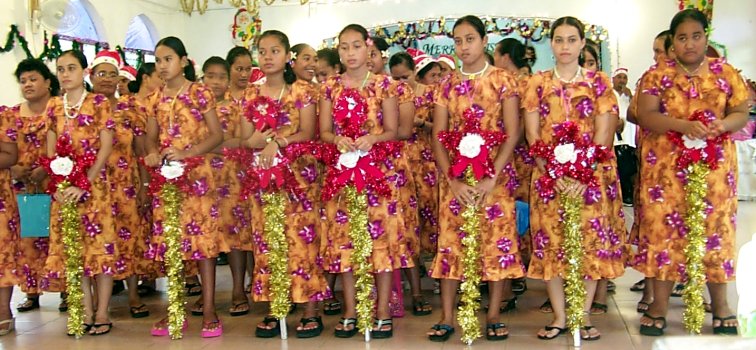
After each march the women in the choir throw candy for the children. Candy arcs through the air and into the audience. One is likely to get beaned on the head a number of times on a good Christmas day. The choir with the heaviest supply of candy ammunition, and the favorite of children and many adults, is the Women's Christian Association choir.
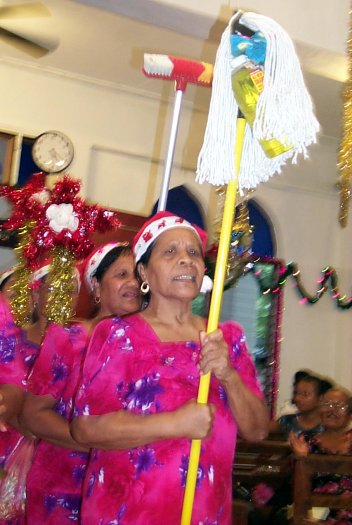
The WCA, or "wisia" in the local parlance, is comprised of mature women who are both church members and socially responsible. These women are females leaders in the church and are often the lead woman in their home. These women are held in great respect by their families and the community. WCA is the oldest church substructure, with foundations in Friday evening women's service held by the Mrs. Lydia Buck Snow, wife of Pastor Benjamin Gallen Snow, in the 1850s.
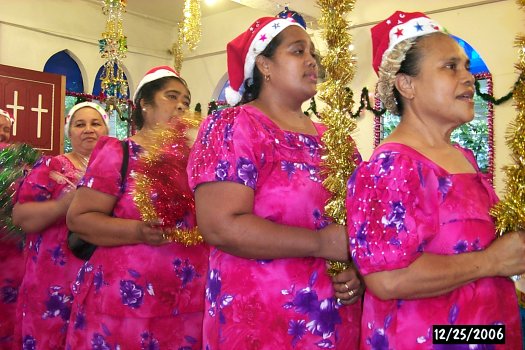
Inac Kenye and Inac Shra Ioanis are on lead star, leading with a mop and broom.
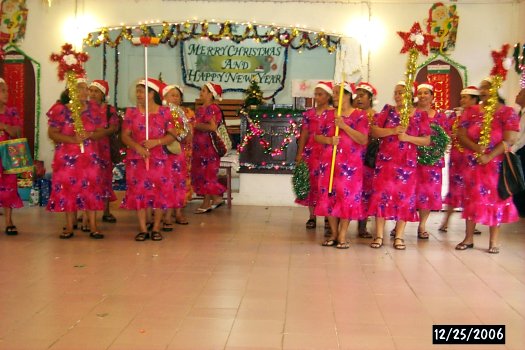
At the front of the church stands a Christmas tree and presents for children, friends, and families
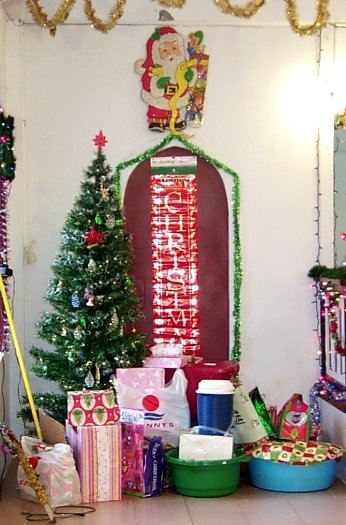
After the marching the adults retired to the patio for a dinner party, island style. Inside the church FSM Health, Education, and Social Affairs Secretary Nena S. Nena called out the recipients of a merry Christmas gift. The WCA, Sunday school teachers, and parents teamed up to ensure every child got a present. Rather than gifts under a tree at home, children get their gifts from Santa at the church. There is a Pacific island sensibility and equity in the gift giving, no child feels they got less than their friends and parents are released from the competitive pressure so often felt in the world of malls beyond these islands. In the image below Mary Rose gets her Christmas gift.
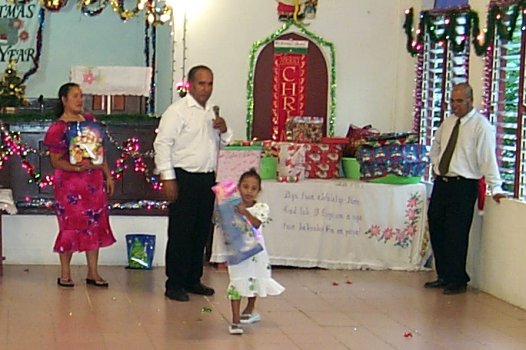
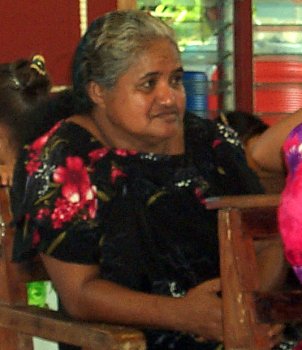
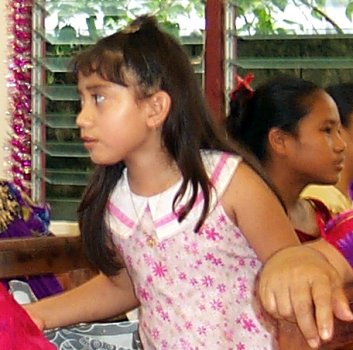
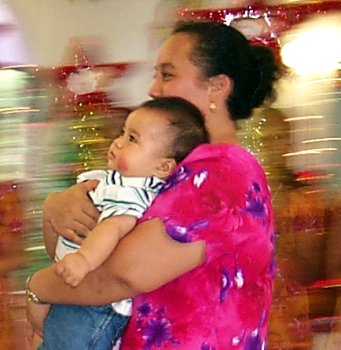

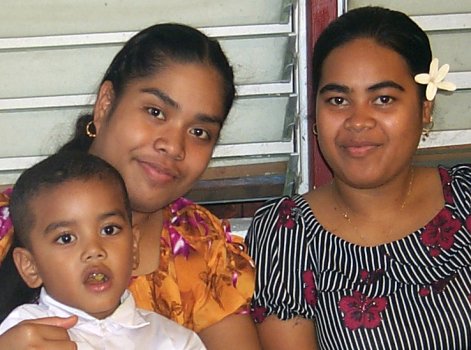
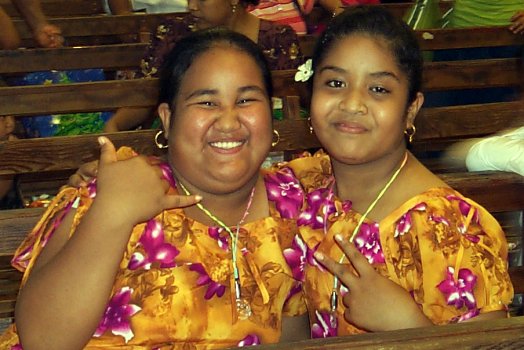
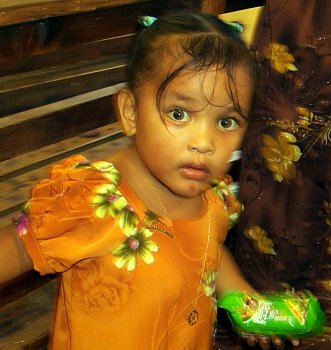
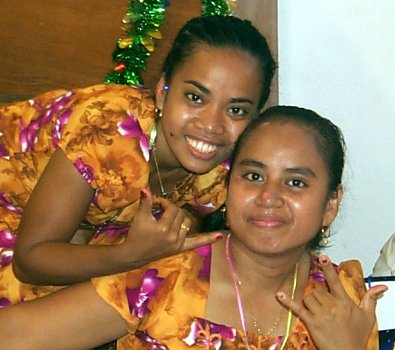
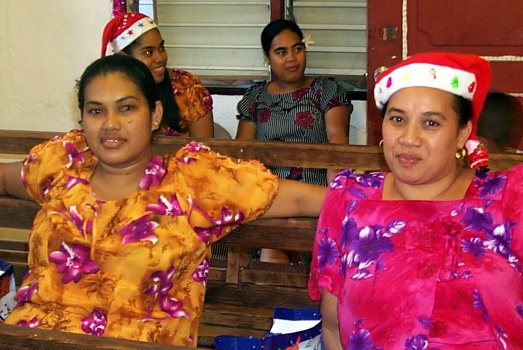

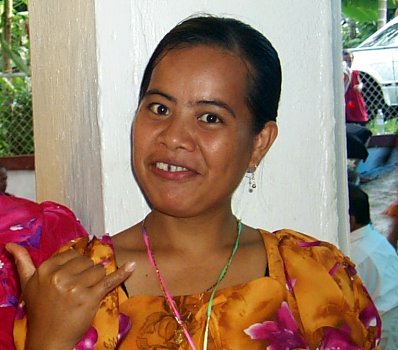
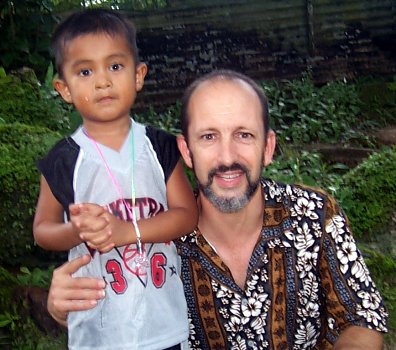
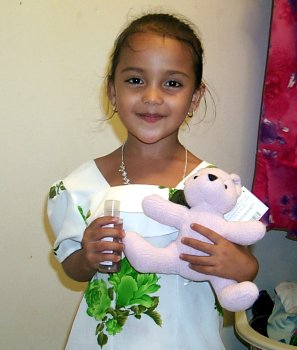
Decorations this year included two Santa Claus figures on the front wall and monkey king balloons imported from somewhere in Asia.
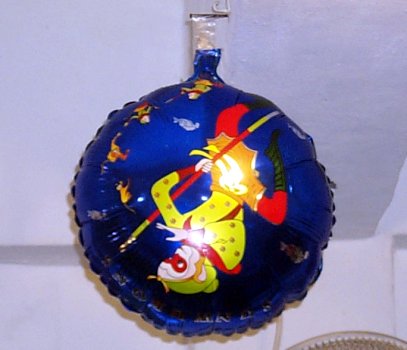
Every Christmas photographer looks for that mother and child image, that emblematic icon for this season of joy.
